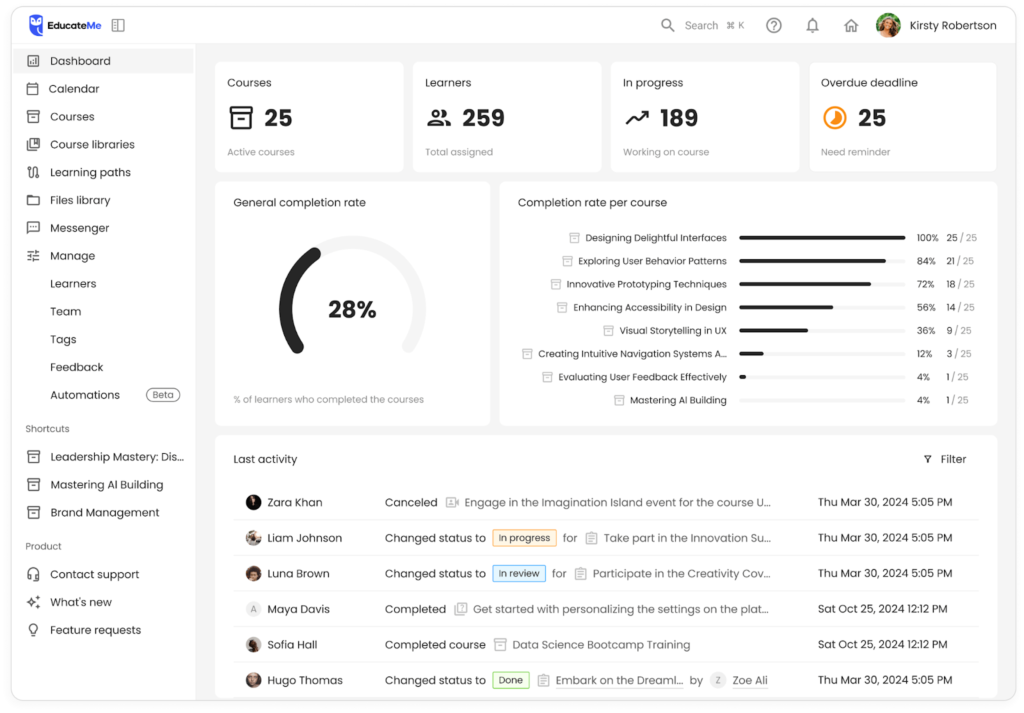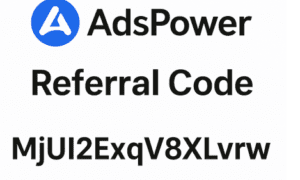You’ve most likely invested a lot of time and effort into providing your staff with training if you have one.
What do you do, though, now that your training is underway?
Given how crucial training programs are to both employee growth and company performance, you should always be making adjustments that will increase the program’s return on investment and have a lasting effect.
Tracking Employee Training Progress
Monitoring the development of your staff training program is crucial to achieving ever-better outcomes.Everything you need to know about monitoring employee training will be covered in this post, including:
- Advantages of monitoring employee training
- Top resources for monitoring employee training
- Important metrics to monitor
Why Track Employee Training?
Prior to delving into the many methods of tracking employee training, it’s critical to comprehend the initial motivation for the endeavour.
Although developing employee training programs requires a lot of work, they greatly benefit your company and the growth of your workforce.
💡 By keeping track of staff training, you can record the program’s effectiveness and identify areas for improvement to make the experience even more interesting.
Other benefits of tracking employee training include:
Collecting important statistics and metrics
Using employee training software, companies can easily track important metrics such as:
- Total training hours
- Average course score
- Employee engagement
- Training effectiveness
- ROI
With all the data in one place, you can discover patterns that can help you improve your courses, content, and employee training effectiveness.
Boost Worker Involvement
💡 40% of workers who receive inadequate training quit their employment within the first year, in case you were unaware.
A business incurs high direct and indirect costs when hiring a single person. The insufficiency of the employee training program is one of the causes of this.
What are your options, then?
Training for employees should be interesting, educational, and easily accessible. Employees will be more inclined to stick with the company and give their best work when they believe that it values them and is offering them high-quality training.
Signal Opportunities for Improvement
Launching your course may sometimes feel like the last step, but don’t relax just yet. By tracking employee training, you will find opportunities for continuous improvement based on what the data is telling you.
Here are some questions to ask yourself if you want to improve your training courses:
- Are employees completing the courses and therefore retaining the information?
- How long does it take for employees to complete a particular course?
- Are employees getting stuck on a particular question that is affecting their progress and performance?
- Are students going through the course indicating that the content is too easy?
- Are there parts of the training that no one has yet decided to complete?
- Are there other ways to engage with employees throughout the training?
Based on the answers to these questions, you can get what you need to make the content even better.
Company Compliance
Every business must comply with the industry and government regulations under which it operates, and many companies monitor their compliance efforts by tracking employee training.
Compliance is important, and so is having the right tools to keep track of employee training.
Let’s look at 3 of the most common ways companies track employee training.
Top 3 Tools to Track Employee Training
It’s difficult when you don’t know where to start and how to track the quality of your employee training program. Here are some popular monitoring tools that can give you useful information about how your training program is performing.
Employee Training Tracking Software
Employee training tracking software with learning management tools are the software that bring online learning to life. These platforms can be used to train and educate employees with a wide range of options for creating, designing, marketing, and hosting training courses.
Such platforms like EducateMe also give you access to reliable data and metrics through built-in employee learning tracking capabilities.
Using this type of solution, you can easily monitor employee learning:
- Track employee progress
- Study each employee’s activity
- Analyze test and assessment results
- View learning performance ratings
- Organize discussions and group activities for employees
Project Management Tool
Another common way companies track employee learning is through project management tools like Trello or ClickUp.
These are project management systems that help you assign, track, and report on employee tasks, helping teams stay organized no matter where they are.
Use Trello or ClickUp to assign and track employee training due dates and milestones.
Google Sheets/Excel
If you’re just starting to track your employee training metrics, you’ve probably already considered using Google Sheets or Microsoft Excel.
Both Google Sheets and Excel are familiar platforms that can help you quickly assign training tasks and keep a log of your employee’s training progress.
What Should You Track?
Now that you know why it’s important to track employee training and what the most popular ways to do it are, you need to know what you’re tracking.
Here are some common employee training metrics and reports to look at when tracking employee training.
Employee Training Hours
One of the easiest ways to measure success in employee training is to collect two types of training hours:
- Total Training Hours
- The time employees spend on each course
Total hours can help establish a baseline for employees as they progress through the company. But since total hours aren’t beyond the obvious, tracking engagement hours (i.e. time spent on quizzes, surveys, group meetings, etc.) can help you better understand how much time an employee is actually spending learning the content.
💡For example, courses with higher incomplete rates are likely losing employee interest somewhere along the way. Find the section where employees are failing to complete the training and rework your content to include more engaging information.
Completion Rates
Tracking training completion data shows you how often employees successfully complete your training course. This may be an extension of tracking employee engagement hours with your training courses, as incomplete courses indicate low employee motivation and engagement.
Overall Assessment Rates
Assessment rates, or pass/fail rates, show how easy or difficult your courses are. These metrics are useful for tracking compliance training that may need to be passed on to someone else.
Other useful information from assessment metrics includes:
- Knowing which courses are too hard or too easy
- Seeing which courses employees have completed and should therefore be able to apply what they have learned
- Identifying new areas of development after an employee has completed a particular piece of training
💡Best Practice: Compare pass/fail rates to the time the learner has spent in the course. If you have an employee who is not completing the course but is reviewing the content, it may not be engaging enough.
Feedback Data
Finally, one of the best forms of tracking employee learning is to go straight to the source. Ask the employee to leave feedback in the course or after completing it. Direct feedback from employees helps you better understand what is working, what is not, and what can make the learning more engaging.
Course feedback data provides both quantitative and qualitative insight into how courses are going. Using EducateMe, you can collect feedback through:
- Pre- and post-course surveys
- Correspondence with the student in chats or private messages
- Tests and homework checks
The more you integrate employee feedback into course adjustments, the more engaging the experience will be for your team members.
Final Thought
To wrap it up, keeping track of employee training is key to making sure your program actually works and keeps getting better. Whether you use training software, project tools, or just a simple spreadsheet, having a system helps you spot what’s working and what’s not. In the end, tracking training makes the whole experience more engaging for employees and more valuable for your business.
Read More From Techbullion




































